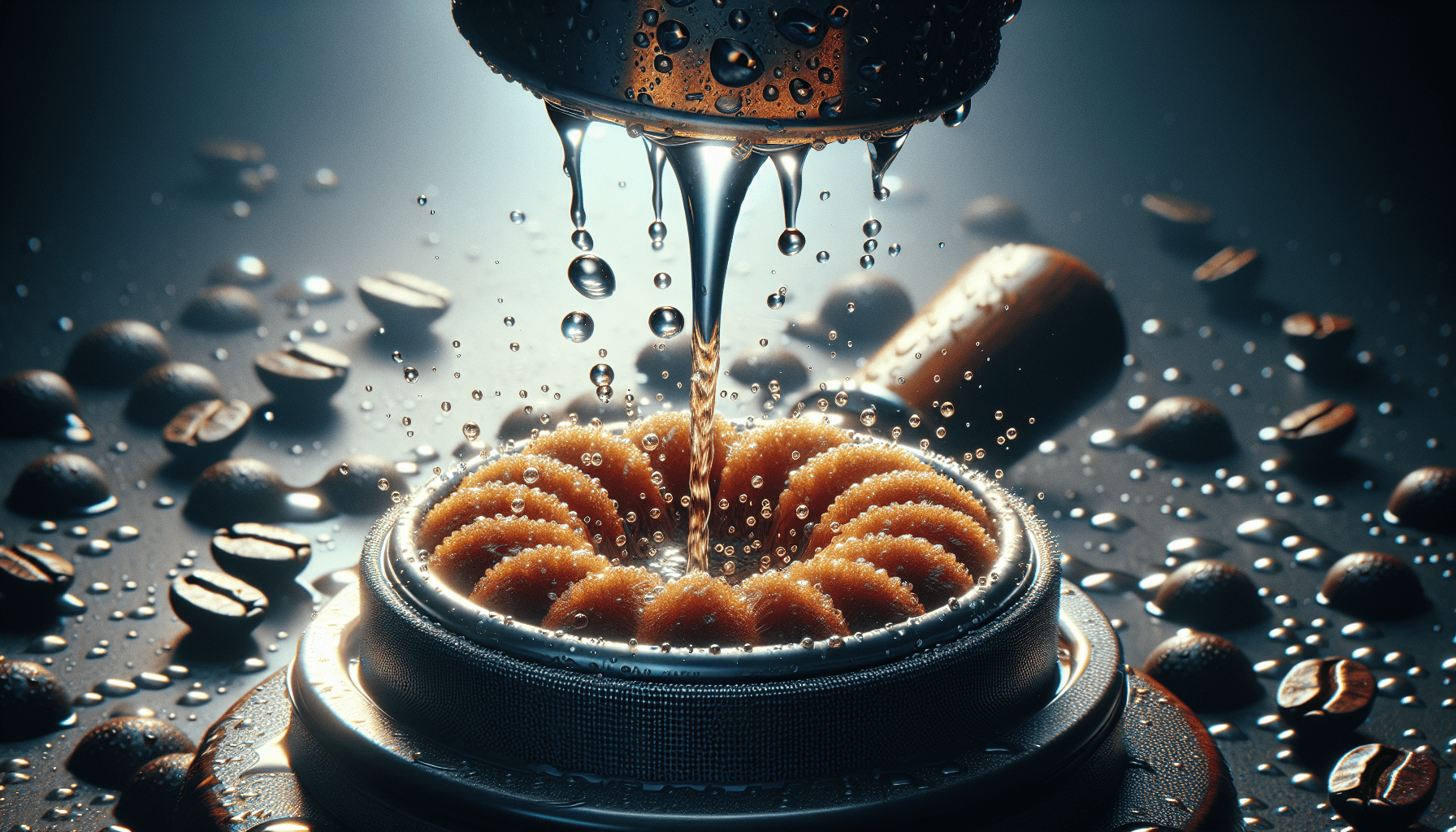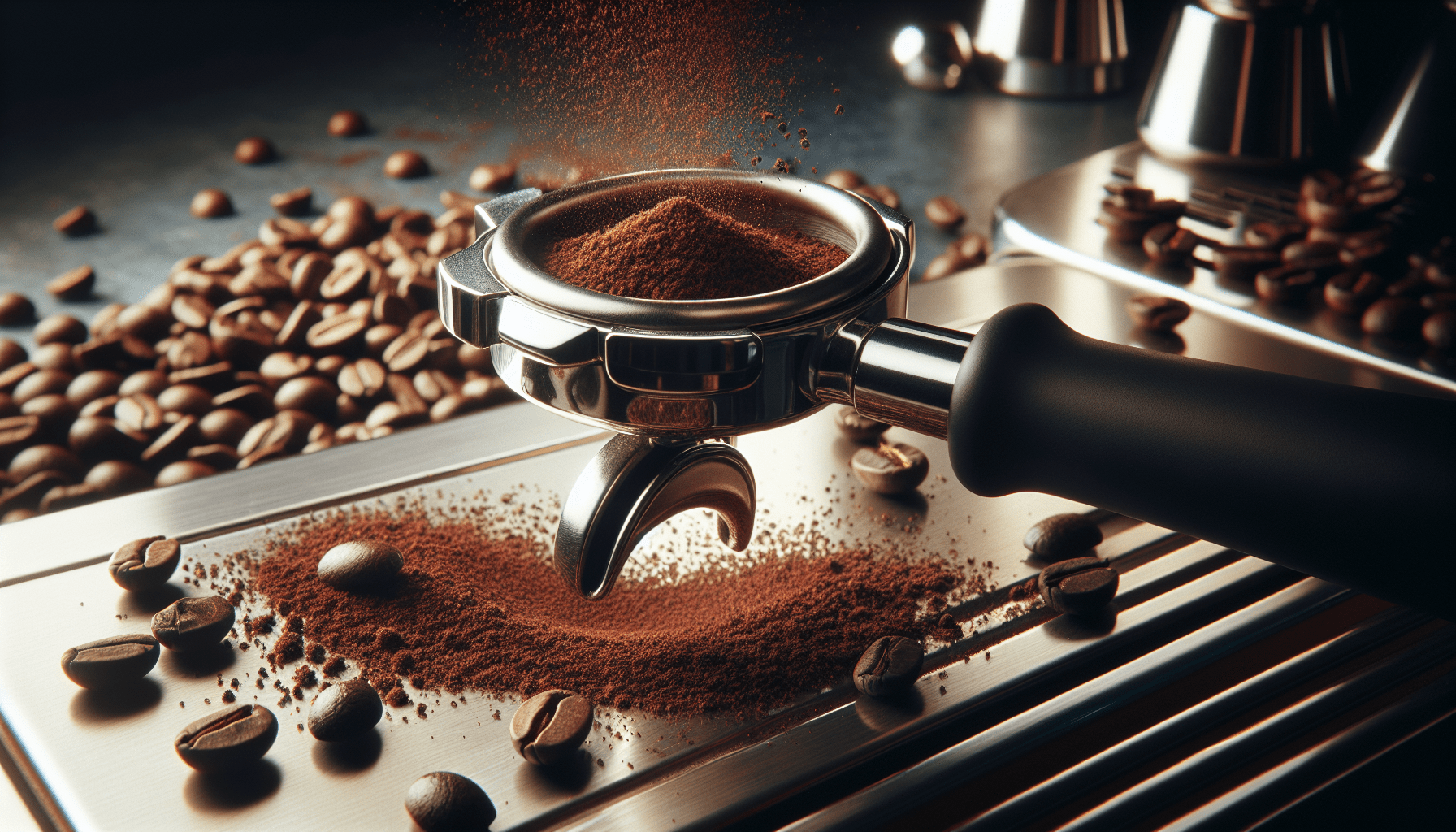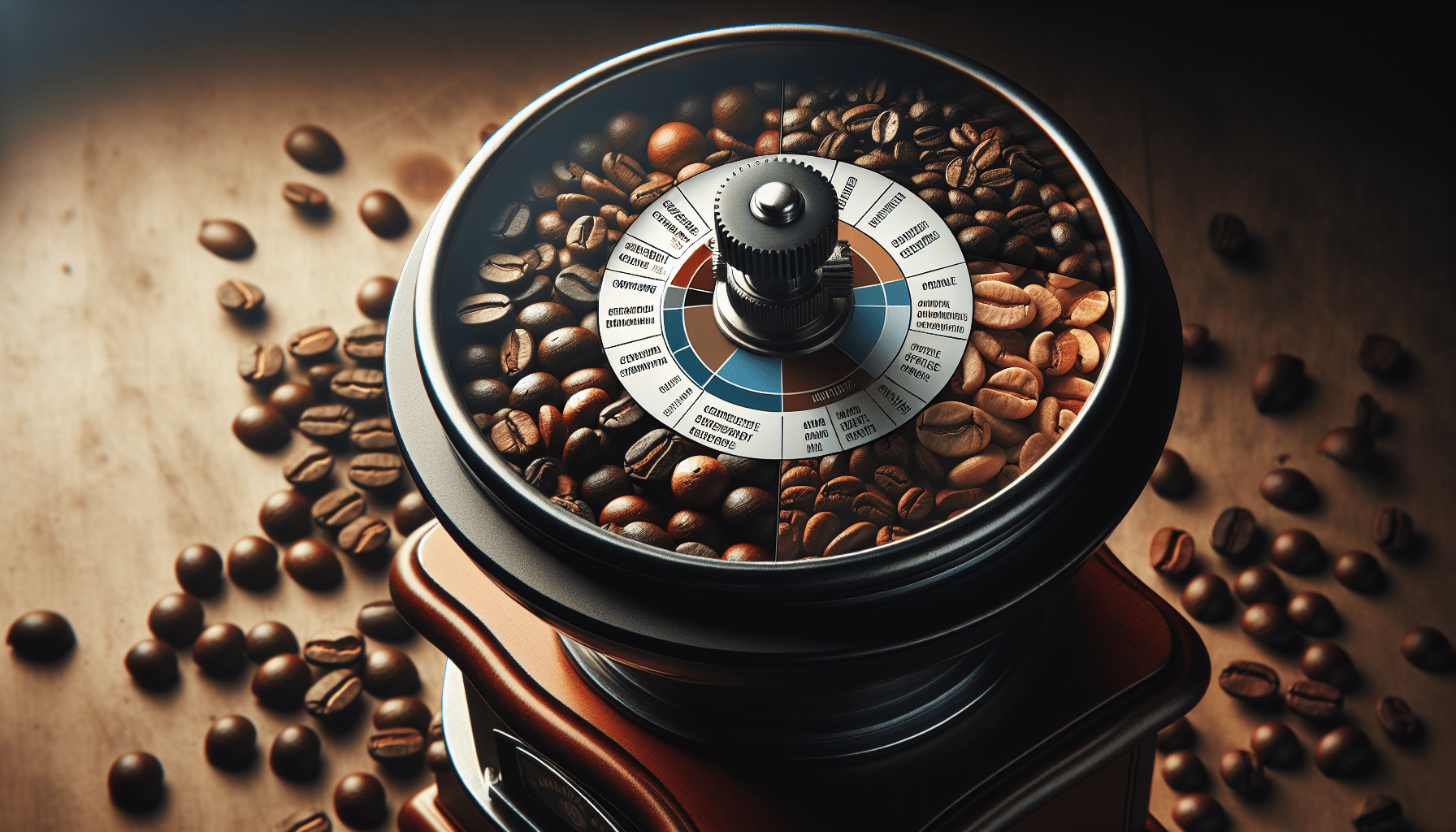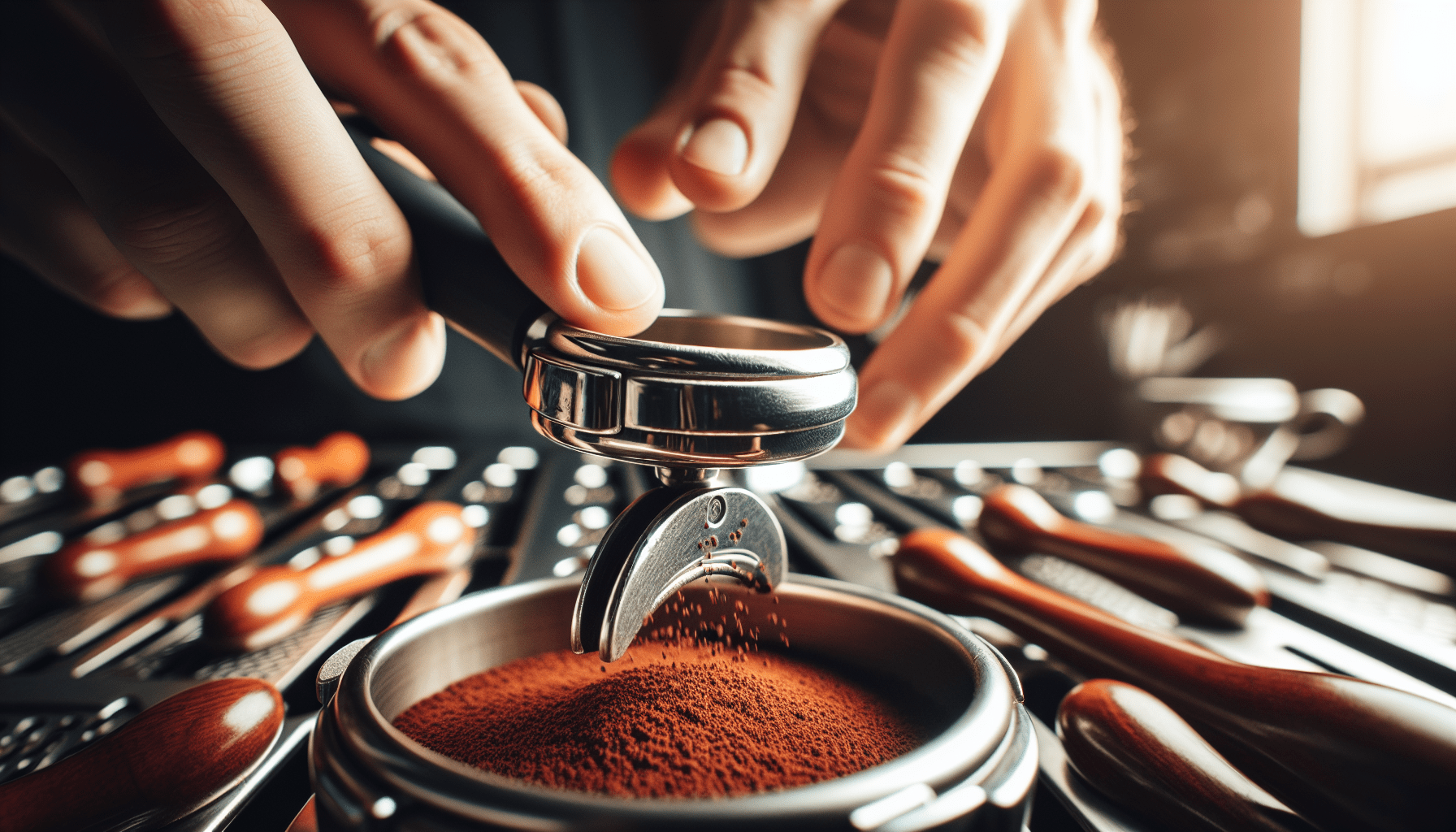Are you a coffee lover who enjoys the rich, velvety taste of espresso? If so, then you must understand the importance of pre-infusion in semi-automatic espresso machines. This fascinating process plays a crucial role in enhancing the flavors and extracting the best possible aroma from your coffee beans. By briefly saturating the coffee grounds with a small amount of water before the full extraction, pre-infusion allows for a more even and controlled brewing process. Join us as we explore the wonders of pre-infusion and the incredible difference it can make in your daily cup of joe.
The Concept of Pre-Infusion
Definition of pre-infusion
Pre-infusion is a process in espresso brewing that involves saturating the coffee grounds with a small amount of water before the full pressure extraction begins. This technique allows for a gentle ramp-up of pressure, ensuring a more even and controlled extraction.
Explanation of how pre-infusion works
During pre-infusion, the coffee grounds are wetted evenly, promoting an initial release of carbon dioxide gases. This expansion creates a “bloom,” which helps to degas the grounds and ensure an even extraction. The gradual increase in pressure during pre-infusion allows the water to permeate the coffee evenly, resulting in a more balanced and flavorful espresso shot.
Benefits of pre-infusion in espresso brewing
Pre-infusion offers several benefits to the brewing process. Firstly, it helps to prevent channeling, which occurs when water creates paths of least resistance through the coffee puck, resulting in uneven extraction. By saturating the grounds evenly, pre-infusion promotes a more uniform extraction. Additionally, pre-infusion can enhance flavor extraction, producing a sweeter and more balanced cup of espresso. It also allows for better control over extraction variables, such as strength and body, leading to a more customizable brewing experience.
Factors Affecting Pre-Infusion
Water temperature
Water temperature plays a crucial role in pre-infusion. The ideal temperature for pre-infusion is generally around 195°F to 205°F (90°C to 96°C). Higher temperatures can lead to faster pre-infusion times but may risk over-extraction. Lower temperatures may result in longer pre-infusion durations, potentially under-extracting the coffee.
Grind size
Grind size is another critical factor when it comes to pre-infusion. To achieve optimal pre-infusion, a medium-fine grind is typically recommended. Finer grinds may lead to slower flow rates and increased pre-infusion times, while coarser grinds may result in faster flow rates and shorter pre-infusion durations.
Coffee dose
The amount of coffee used, or the coffee dose, also impacts pre-infusion. A higher dose will generally require a longer pre-infusion time to ensure even saturation. Conversely, a lower dose may require a shorter pre-infusion duration. It is essential to consider the desired strength and extraction yield when determining the appropriate coffee dose for pre-infusion.
Tamping pressure
Consistent tamping pressure is crucial for pre-infusion. Uneven tamping can lead to channeling and inconsistent extraction. The pressure applied during tamping directly influences the density of the coffee puck, which affects the flow rate and extraction during pre-infusion. It is important to focus on maintaining a consistent, level tamp to ensure even water distribution during pre-infusion.
Water Temperature and Pre-Infusion
Ideal water temperature for pre-infusion
The ideal water temperature for pre-infusion is typically between 195°F and 205°F (90°C and 96°C). This temperature range allows for optimal extraction while minimizing the risk of over-extraction or scorching the coffee grounds. It is crucial to use a thermometer or a temperature-controlled espresso machine to achieve the desired water temperature consistently.
Effect of water temperature on pre-infusion time
Water temperature can impact the duration of pre-infusion. Higher water temperatures may lead to faster pre-infusion times, as the increased heat promotes quicker extraction. Conversely, lower water temperatures may result in longer pre-infusion durations, giving the water more time to saturate the grounds fully.
Impact of water temperature on flavor extraction
The water temperature during pre-infusion also influences flavor extraction. Warmer water tends to extract more solubles and can produce a more robust, intense flavor profile. Cooler water, on the other hand, may result in a milder extraction, highlighting more delicate flavors. Finding the right balance between water temperature and desired flavor intensity is crucial for achieving the desired taste in pre-infusion.
Grind Size and Pre-Infusion
Optimal grind size for pre-infusion
To achieve optimal pre-infusion, a medium-fine grind size is typically recommended. This grind size allows for even water flow and saturation without compromising extraction. A consistency similar to table salt or slightly finer is often considered ideal.
Influence of grind size on pre-infusion duration
Grind size directly affects the pre-infusion duration. Finer grinds tend to slow down the flow of water, resulting in longer pre-infusion times. Coarser grinds, on the other hand, allow water to pass through more quickly, leading to shorter pre-infusion durations. Fine-tuning the grind size can help achieve the desired pre-infusion timing and extraction results.
Relationship between grind size and extraction rate
The grind size chosen for pre-infusion can also impact the extraction rate. Finer grinds tend to extract more quickly, potentially leading to over-extraction if not appropriately timed. Coarser grinds may extract more slowly, requiring longer pre-infusion durations to achieve balanced extraction. Finding the right balance between grind size and desired extraction rate is crucial for optimizing pre-infusion.
Coffee Dose and Pre-Infusion
The right coffee dose for pre-infusion
Determining the appropriate coffee dose for pre-infusion depends on various factors, such as desired strength, body, and flavor profile. Generally, a higher coffee dose will require a longer pre-infusion time to ensure even extraction. Conversely, a lower coffee dose may necessitate a shorter pre-infusion duration. It is essential to consider personal preference and experiment to find the optimal dose for pre-infusion.
How coffee dose affects pre-infusion time
Coffee dose directly impacts pre-infusion time. More coffee grounds require more time for the water to saturate fully and begin extracting flavor compounds. A higher coffee dose may result in longer pre-infusion durations, while a lower coffee dose may lead to shorter durations. Adjusting the coffee dose is a valuable tool for controlling pre-infusion and achieving desired flavors in espresso.
Effects of coffee dose on flavor concentration
The coffee dose not only impacts pre-infusion time but also influences flavor concentration in the final espresso shot. A higher dose tends to result in a more intense and concentrated flavor due to the increased coffee-to-water ratio. Conversely, a lower dose may produce a milder flavor profile. Balancing the coffee dose with pre-infusion can help achieve the desired strength and flavor concentration in the espresso.
Tamping Pressure and Pre-Infusion
Importance of consistent tamping pressure
Consistent tamping pressure is key to achieving a successful pre-infusion. Inadequate or uneven tamping can lead to channeling, uneven extraction, and inconsistent flavors. Applying consistent pressure while tamping helps ensure an even coffee bed and promotes even water distribution during pre-infusion.
Impact of tamping pressure on pre-infusion duration
Tamping pressure can affect pre-infusion duration by influencing the density and flow rate of the coffee puck. Higher tamping pressure may result in a more compact puck, slowing down the flow of water and extending pre-infusion time. Lighter tamping pressure may lead to a less dense puck and faster water flow, shortening the pre-infusion duration. Finding the right tamping pressure is crucial for achieving consistent and controlled pre-infusion.
How tamping pressure affects extraction yield
Tamping pressure also influences the extraction yield during pre-infusion. Higher tamping pressure can restrict water flow and extraction, resulting in a lower yield. Conversely, lighter tamping pressure may allow for faster and more extensive extraction, resulting in a higher yield. Balancing tamping pressure with the desired extraction yield is essential for optimizing pre-infusion.
Controlling Pre-Infusion Time
Manual control vs. automatic control
Controlling pre-infusion time can be done manually or automatically, depending on the espresso machine’s capabilities. Manual control allows for more hands-on adjustment of pre-infusion time, offering greater customization and experimentation. Automatic control relies on pre-programmed settings, which may limit the control over pre-infusion duration. Determining the preferred method of control depends on individual preferences and the level of customization desired.
Benefits of adjusting pre-infusion time
Adjusting pre-infusion time provides several benefits. It allows for more control over flavor extraction, enabling customization based on personal preferences. Fine-tuning pre-infusion time can also aid in maximizing extraction yield, achieving consistent results, and obtaining desired strength and body in the espresso. By taking control of pre-infusion time, enthusiasts can truly tailor their espresso experience.
Methods for fine-tuning pre-infusion duration
Fine-tuning pre-infusion duration can be achieved through various methods. Manual machines often offer the ability to manually engage and disengage the pump, providing control over when pre-infusion begins and ends. For automatic machines, adjusting the pre-infusion time may involve changing preset settings or utilizing user-programmable options. Experimentation and attention to the resulting flavors are crucial when fine-tuning pre-infusion duration.
Flavor Profile Enhancement
Effect of pre-infusion on flavor extraction
Pre-infusion significantly impacts the flavor extraction process. By saturating the coffee evenly and allowing for controlled extraction, pre-infusion can enhance the flavors present in the coffee. The gentle ramp-up of pressure during pre-infusion promotes a more even extraction of sugars, acids, and other flavor compounds, resulting in a well-balanced and flavorful espresso shot.
Enhancement of sweetness and acidity
One of the notable effects of pre-infusion is the enhancement of sweetness and acidity in the espresso. By promoting a more balanced extraction, pre-infusion can bring out the natural sweetness of the coffee while accentuating its bright acidity. This can result in a more vibrant and complex flavor profile, showcasing the unique characteristics of the beans.
Balancing bitterness and astringency
Pre-infusion also plays a role in balancing bitterness and astringency in the final cup of espresso. The controlled extraction helps avoid over-extracting bitter compounds, resulting in a smoother and less harsh taste. By achieving a more balanced extraction, pre-infusion can minimize astringency, leading to a more enjoyable and well-rounded flavor experience.
Extraction Yield Optimization
Improving consistency in extraction yield
Pre-infusion can contribute to improving consistency in extraction yield. By saturating the coffee evenly and avoiding channeling, pre-infusion helps ensure that extraction occurs uniformly throughout the coffee puck. This leads to more consistent extraction yields, allowing baristas to replicate flavors and achieve desired results consistently.
Maximizing extraction with pre-infusion
Pre-infusion can also help maximize the extraction of flavors from the coffee grounds. By gently saturating the coffee and allowing for controlled extraction, pre-infusion promotes a more thorough and even extraction of soluble compounds. This can result in a higher extraction yield, capturing more of the desirable flavors present in the coffee.
Achieving desired strength and body in espresso
Controlling pre-infusion allows baristas and enthusiasts to achieve the desired strength and body in their espresso. By adjusting variables such as water temperature, grind size, coffee dose, and pre-infusion time, it is possible to fine-tune the brewing process and produce espresso with specific characteristics. Pre-infusion serves as a valuable tool in customizing the strength and body of the final cup based on individual preferences.
Pre-Infusion as a Customization Tool
Tailoring espresso flavor to personal preference
Pre-infusion offers a unique opportunity to tailor the flavor of espresso to personal preference. By adjusting variables such as pre-infusion time, water temperature, grind size, and coffee dose, enthusiasts can experiment and find the ideal combination that brings out the flavors they enjoy most. This level of customization allows for a more personalized and satisfying espresso experience.
Experimenting with pre-infusion variables
Pre-infusion provides an excellent platform for experimentation and exploration. Varying the pre-infusion time, adjusting water temperature, trying different grind sizes, and exploring various coffee doses can yield surprising and delightful results. It allows coffee enthusiasts to further discover the nuances and tasting notes of different beans and discover unique flavor profiles through pre-infusion.
Exploring unique tasting notes through pre-infusion
Pre-infusion unlocks the potential for uncovering unique tasting notes in espresso. By customizing the pre-infusion parameters, such as adjusting the flow rate and duration, it becomes possible to highlight specific flavor characteristics that may be more subtle or hidden without pre-infusion. This level of control and exploration opens up a world of possibilities for discovering new and exciting flavors in espresso.




